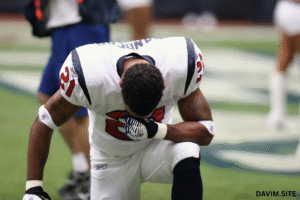Rest of season rankings (ROS rankings) are among the most effective weapons in your toolkit, whether your sport is fantasy football, baseball, basketball, or any other one. These rankings provide a forward-looking view of player worth from right now through the season. While the remainder of the season’s rankings change with every game, trade, injury, and breakthrough play, preseason rankings center expectations.
We will discuss in this post what remainder of season rankings are, why they are important, how to make the most use of them, and where to get the most current and reliable lists. Understanding ROS rankings changes everything if you are hoping to win your fantasy league—or at least reach the playoffs.
What Are Rest of Season Rankings?
Rest-of-season rankings are revised assessments of players that project their worth for the next phase of the fantasy season. These rankings include current performance, injuries, schedule strength, club chemistry, trades, and a range of other factors that could affect a player’s fantasy production.
Key Components of ROS Rankings
-
Recent Performance: A hot streak or slump can significantly change a player’s rank.
-
Injuries: Injured players drop, while healthy backups may rise.
-
Team Context: Coaching changes, offensive schemes, and team morale can affect output.
-
Schedule: Easier or tougher upcoming opponents can move players up or down.
-
Rest Days (for NBA/MLB): Teams that frequently rest stars can reduce fantasy reliability.
Why Rest of Season Rankings Matter
1. Trade Value Assessment
If you’re negotiating trades, ROS rankings can tell you whether you’re getting fair value or not. Just because a player has a big name doesn’t mean they’ll be productive moving forward. ROS rankings strip away the hype and show real, projected value.
2. Waiver Wire Strategy
Before grabbing a player off waivers, you should check where they rank rest of season. If they’re projected to outperform someone on your bench, that’s an easy decision.
3. Start/Sit Decisions
When it’s tough to decide who to start, ROS rankings provide a broader view than weekly rankings. They help balance short-term matchups against long-term trends.
4. Playoff Planning
ROS rankings often factor in schedule strength. For example, a quarterback with weak playoff defenses in Weeks 15–17 could rank higher even if their current stats are average.
How to Use Rest of Season Rankings to Win Your Fantasy League
Step 1: Know Your League Format
Different formats (PPR vs. standard, 8-team vs. 16-team, dynasty vs. redraft) will require different interpretations of the rankings. Make sure the ROS rankings you’re using are tailored to your format.
Step 2: Combine Rankings with Projections
Numbers are good, but context is better. A player ranked 15th ROS might be a boom-or-bust candidate. Projections can give you an idea of weekly volatility, which helps with risk management.
Step 3: Monitor Weekly Updates
ROS rankings are fluid. Don’t rely on a list from three weeks ago. Fantasy football and other sports change fast—keep up with the latest to make informed decisions.
Step 4: Identify Buy-Low and Sell-High Players
If a player is underperforming but still ranked high rest of season, he could be a buy-low candidate. Conversely, if someone is overperforming and ranked lower ROS, now might be the time to trade them away.
Where to Find Accurate Rest of Season Rankings
Several sites update their ROS rankings weekly and are trusted by fantasy communities:
-
FantasyPros: Aggregates rankings from multiple experts.
-
ESPN: Offers detailed projections and rest-of-season insights.
-
CBS Sports: Regularly updates rankings with news-driven adjustments.
-
Yahoo Fantasy: Rankings tailored to their specific league settings.
-
RotoWire: Strong for both season-long and DFS players.
Always cross-check at least two different sources to avoid bias or outdated data.
Sport-Specific Tips
Fantasy Football Rest of Season Rankings
In football, the short season means every week matters. Injuries to QBs, RBs, and WRs drastically change team outlooks. Pay attention to:
-
Running Back Committees: A backfield shift can boost or tank a player’s ROS value.
-
Quarterback Changes: A backup QB may favor different receivers.
-
Defensive Matchups: Weeks 14-17 can make or break your playoff hopes.
Example:
A running back like Bijan Robinson may be underutilized early in the season, but if the coaching staff commits to him, his ROS ranking skyrockets.
Fantasy Baseball Rest of Season Rankings
Baseball has a long season, and hot streaks come and go. ROS rankings are especially useful here to identify consistency.
-
Pitcher Injuries and Workloads are major ranking influencers.
-
Rookies Getting Called Up can be major ROS movers.
-
Hitter Splits: Some players perform better in warmer months or against specific divisions.
Example:
A hitter like Julio Rodríguez might start slow but have a strong second half, justifying a high ROS ranking even when early stats disappoint.
Fantasy Basketball Rest of Season Rankings
With stars resting frequently, usage and availability matter more than raw talent.
-
Injuries change the fantasy landscape more often than other sports.
-
Trade Rumors and tanking teams can lead to breakout players late in the season.
-
Rest Days during back-to-backs heavily affect star value.
Example:
A player like Tyrese Maxey might gain ROS value due to increased minutes, even if he’s not the flashiest name.
Common Mistakes When Using ROS Rankings
1. Blindly Trusting the List
No ranking is perfect. Use them as a guide—not gospel. Always consider context like matchups, weather (in football), or upcoming schedule quirks.
2. Ignoring Team Needs
A team stacked at WR but thin at RB should value even lower-ranked RBs more.
3. Overreacting to One Week
A poor performance doesn’t mean a player’s season is over. Don’t panic trade or drop someone based on emotion.
4. Not Checking Updates
Make sure the rankings are current. Injuries, benchings, or trades can change everything overnight.
Using ROS Rankings in Dynasty Leagues
While ROS rankings are primarily used for redraft formats, they still hold value in dynasty leagues. The key is balance.
-
Use ROS rankings for short-term trades.
-
Combine with dynasty rankings to plan long-term strategy.
-
Target veterans undervalued in dynasty formats but useful ROS.
Advanced ROS Strategy Tips
Target Fantasy Playoff Schedules
Look ahead to Weeks 14–17. If you’re playoff-bound, acquiring players with soft playoff matchups is worth sacrificing early value.
Handcuff High-Value Players
In football and basketball, backups behind injury-prone stars may be low in current rankings but high in ROS upside.
Stash Suspended/Injured Stars
Players returning late in the season often have excellent ROS rankings. If you can afford the bench spot, stash them early.
ROS Rankings and DFS (Daily Fantasy Sports)
While DFS is more focused on single-day matchups, keeping an eye on ROS trends helps:
-
Spot undervalued players in salary-based DFS contests.
-
Avoid regression candidates who may be overpriced based on early performances.
Conclusion: Stay Ahead With ROS Rankings
Rest of season ranks are a dynamic plan for success, not simply a list. Applied sensibly, they provide a competitive advantage in trades, waiver picks, and lineup choices. Staying informed with correct, revised remainder of season rankings may make all the difference between glory and despair in a game where one poor action could lose a title.
ROS rankings should be a persistent tab in your fantasy browser whether you are in a fierce playoff push or future dynasty building. Research them, confront them, and most importantly—use them.
Want weekly rest of season rankings with professional analysis? Set notifications on your preferred platform and bookmark to ensure you never miss an update. Use statistics to rule your league, not speculation.

